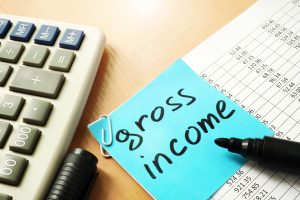
On one hand, high retained earnings could indicate financial strength since it demonstrates a track record of profitability in previous years. On the other hand, it could be indicative of a company that should consider paying more dividends to its shareholders. This, of course, depends on whether the company has https://www.bookstime.com/ been pursuing profitable growth opportunities. Generally speaking, a company with a negative retained earnings balance would signal weakness because it indicates that the company has experienced losses in one or more previous years.

Retained earnings at closing entry

Retained Earnings are reported on the balance sheet under the shareholder’s equity section at the end of each accounting period. To calculate RE, the beginning RE balance is added to the net income or reduced by a net loss and then dividend payouts are subtracted. A summary report called a statement of retained earnings is also maintained, outlining the changes in RE for a specific period. There can be cases where a company may have a negative retained earnings balance. This is the case where the company has incurred more net losses than profits to date or has paid out more dividends than what it had in the retained earnings account. For example, if you prepare a yearly balance sheet, the current year’s opening balance of retained earnings would be the previous year’s closing balance of the retained earnings account.

Examples of Debits and Credits in a Corporation
This reinvestment into the company aims to achieve even more earnings in the future. Retained earnings refer to the historical profits earned by a company, minus any dividends it paid in the past. To get a better understanding of what retained earnings can tell you, the following options broadly cover all possible uses that a company can make of its surplus money.
What Is the Difference Between Retained Earnings and Dividends?
Like paid-in capital, retained earnings is a source of assets received by a corporation. Paid-in capital is the actual investment by the stockholders; retained earnings is the investment by the stockholders through earnings not yet withdrawn. Retained earnings are a clearer indicator of financial health than a company’s profits because you can have a positive net income but once dividends are paid out, you have a negative cash flow. A retained earnings deficit occurs when a company’s retained earnings account has a debit balance, indicating that accumulated losses exceed accumulated profits. If your business currently pays shareholder dividends, you’ll need to subtract the total paid from your previous retained earnings balance.
They’re like a link between your income statement (aka your profile and loss statement) and your balance sheet. Retained earnings are recorded under shareholders’ equity, showing how these earnings can be used as a tool to generate growth. That’s your beginning retained earnings, profits or losses for the period, and your dividends paid. And while that seems like a lot to have available during your accounting cycles, it’s not.

Another factor that affects the balance of the retained earnings account is the declaration of distributions that are paid to the company’s shareholders. The amount a company gets for the stocks sold at par value is the share capital while any additional amount realized is the paid-in capital. Part of the benefits investors receive for purchasing shares in a company is the payment of dividends that they receive either quarterly or yearly depending on how often the company declares distributions.

Management and Retained Earnings
There is no change in the company’s equity, and the formula stays in balance. Alternately, dividends are cash or stock payments that a company makes to its shareholders out of profits or reserves, typically on a quarterly or annual basis. Alternatively, if it is to correct the understatement petty cash of prior period net income, the company will credit the retained earnings in the journal entry instead. That part of the accounting system which contains the balance sheet and income statement accounts used for recording transactions.
Debits and Credits Outline
- The figure is calculated at the end of each accounting period (monthly/quarterly/annually).
- A company’s retained earnings can also be impacted by mergers, acquisitions, or other significant financial transactions.
- This is especially true for companies that have a large number of shareholders to pay dividends to, those with a high dividend payment rate, or those who often reinvest profits back into the business.
- This, of course, depends on whether the company has been pursuing profitable growth opportunities.
The amount of retained earnings that a corporation may pay as cash dividends may be less than total retained earnings for several contractual or voluntary reasons. These contractual or voluntary restrictions or limitations on retained earnings are retained earnings retained earnings normal balance appropriations. For example, a loan contract may state that part of a corporation’s $100,000 of retained earnings is not available for cash dividends until the loan is paid.
Prior Period Adjustments
Samsung Inc. earned a net profit of 500,000 during the accounting period Jan-Dec 20×1. The company decided to retain the profits for that year and invest the retained earnings in expanding the business. This increase in retained earnings is credited to Retained Earnings Account. Immediately after the temporary accounts are closed by transferring their balances to an owner’s equity or stockholders’ equity account, the only accounts with non-zero balances will be the permanent accounts. After reviewing the feedback we received from our Explanation of Debits and Credits, I decided to prepare this Additional Explanation of Debits and Credits. In it I use the accounting equation (which is also the format of the balance sheet) to provide the reasoning why accountants credit revenue accounts and debit expense accounts.

